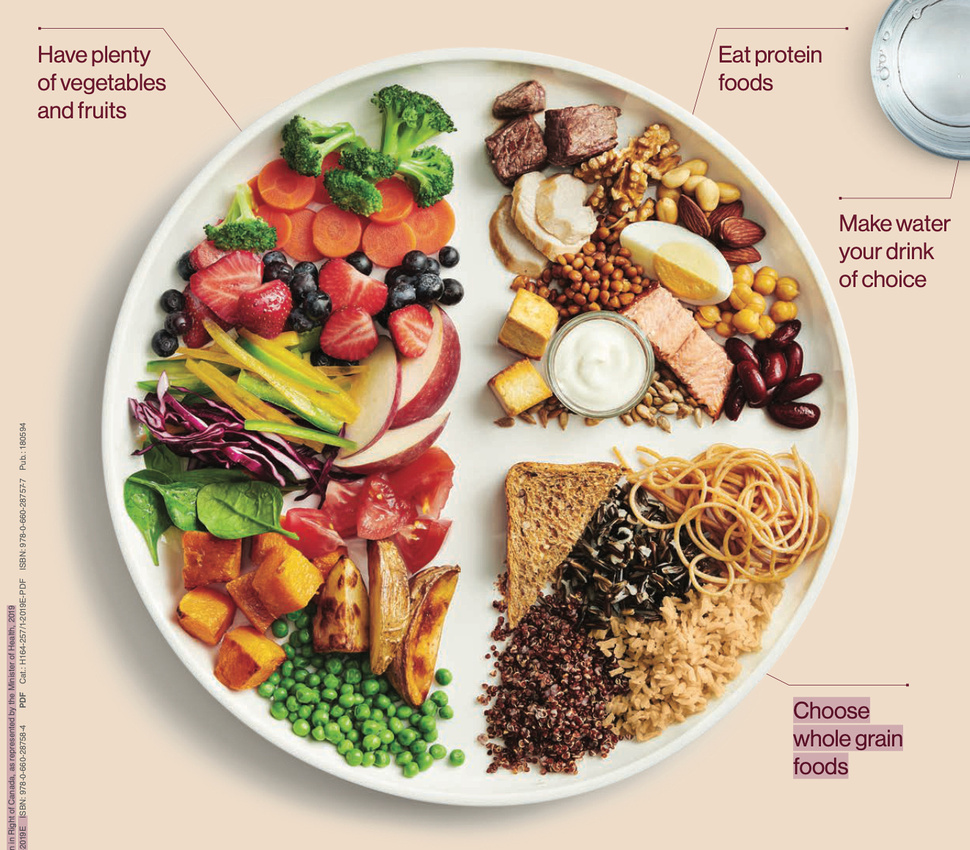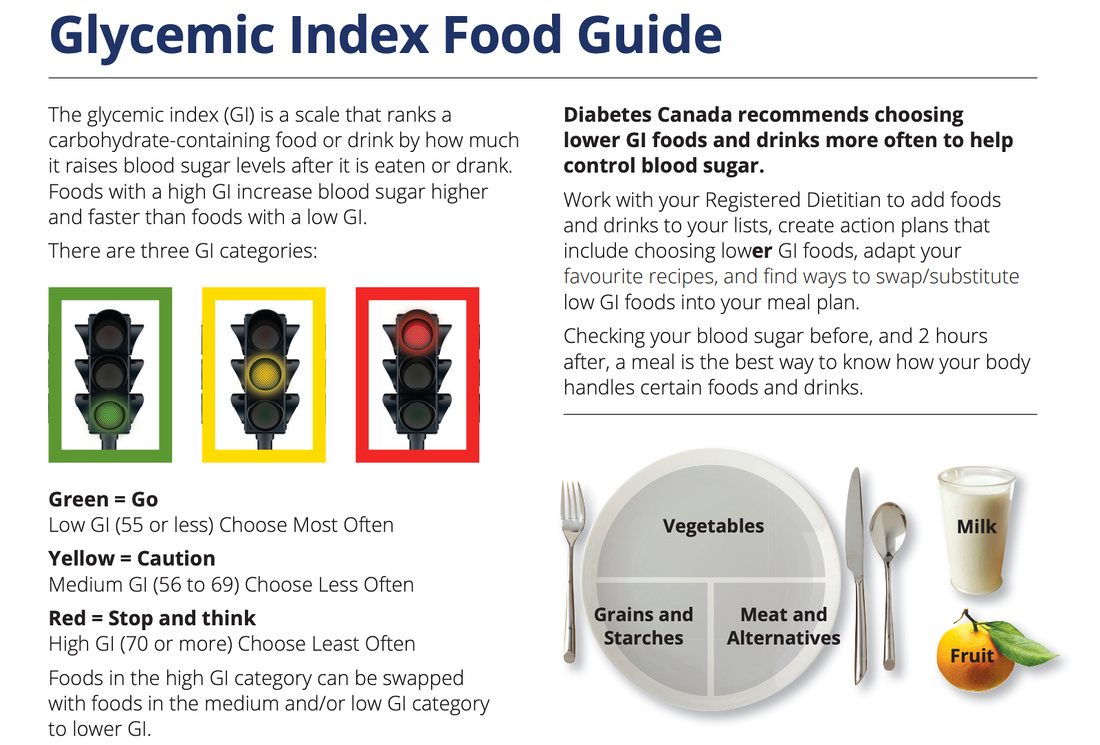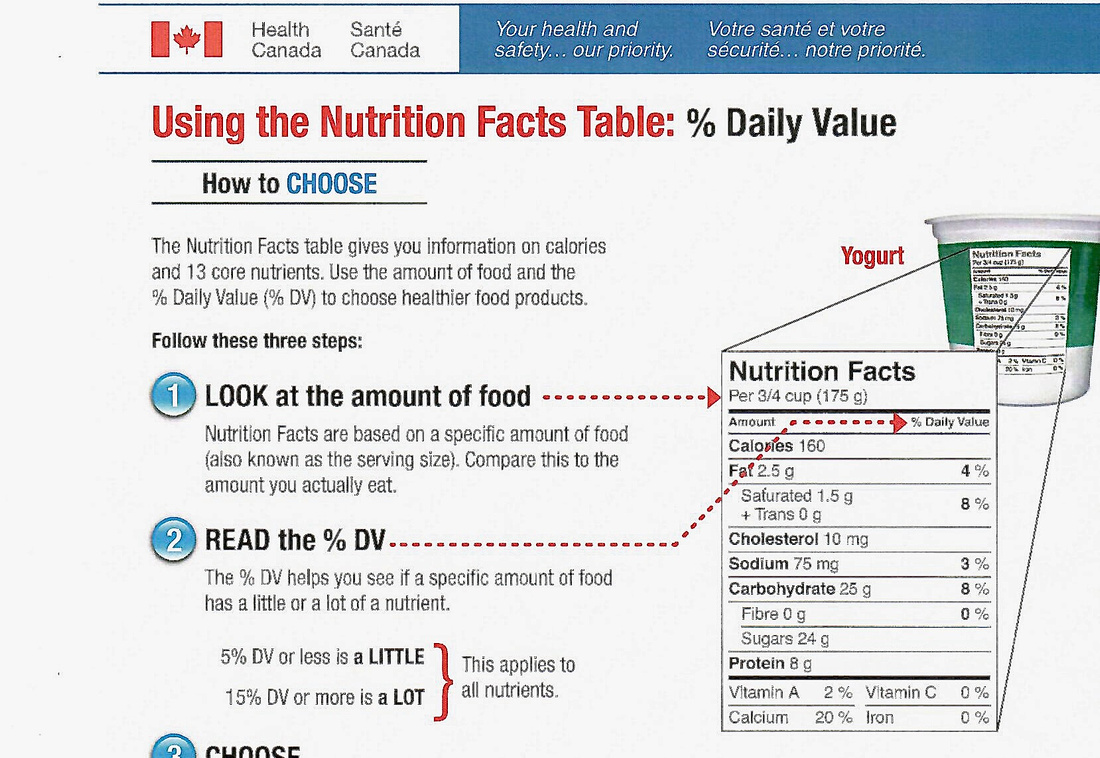Spoonful of Sugar Series - #2 The Dreaded Appointment

 The Dietician’s Advice
The Dietician’s Advice
(Or, I have a guide for that.)
Before I even met my dietician on 8th February, I had a homework assignment - to set up and maintain a food diary, documenting everything that went into my mouth. Even water. When I met Cheryl for the first time - newly created food diary in hand - I was a bundle of nerves and very apprehensive. To be fair, Cheryl is very friendly and knowledgeable and helpful and kind. Still, with so much on the line, I was stressed and edgy, knowing I’d not like what she was most likely to advise. Calmly and affably, she soon put me at ease. We began (just like in grade two health class) with Canada’s Food Guide, and their plate image:

 Three times a day, regardless of the size of my plate or meal, my plate’s composition must always be, ½ vegetables and fruits (mostly veggies), ¼ grains and starches and ¼ protein. Honestly, that’s seldom how my plate looked in the past - more likely 40% veggies, 40% grains/starches and 20% protein. Truly, (except, of course, for having to abandon sweet desserts), changing the composition of my plate has been the biggest adjustment to my diet. I need more protein and, so it turns out, I’m not a protein person. Besides explaining her philosophy - to create a diet and eating habits that I can adopt long term, five years initially - discussing my food diary and the food guide (and my diet's obvious shortcomings) was our entire meeting. I was given a handout, told to study it and implement its recommendations, continue with my food diary and we’d meet again in two weeks’ time.
Three times a day, regardless of the size of my plate or meal, my plate’s composition must always be, ½ vegetables and fruits (mostly veggies), ¼ grains and starches and ¼ protein. Honestly, that’s seldom how my plate looked in the past - more likely 40% veggies, 40% grains/starches and 20% protein. Truly, (except, of course, for having to abandon sweet desserts), changing the composition of my plate has been the biggest adjustment to my diet. I need more protein and, so it turns out, I’m not a protein person. Besides explaining her philosophy - to create a diet and eating habits that I can adopt long term, five years initially - discussing my food diary and the food guide (and my diet's obvious shortcomings) was our entire meeting. I was given a handout, told to study it and implement its recommendations, continue with my food diary and we’d meet again in two weeks’ time.
It didn’t seem so bad. I left quite optimistically (which was, I’m sure, Chery’s intent), thinking to myself, no problem, I’ve got this!
Silly fool!
At meeting number two, I was introduced to the Glycemic Index which, initially, seemed easy enough to follow: Just like a stoplight, foods are divided into three groups - red, yellow and green.
Green = Go: Low GI (55 or less), choose these foods most often.
Yellow = Caution: Medium GI (56 to 69),choose these less often.
Red = Stop and think: High GI (70 or more) choose least often!
Yup, there’s also a guide for this: Glycemic Index Food Guide:

 After quickly scanning the guide, there were a few surprises:
After quickly scanning the guide, there were a few surprises:
Red zone surprises:
All-Bran Flakes
Special K
Carrots
Hot potatoes
Yellow zone surprises:
Stone Ground Whole Wheat Bread
Whole Grain Wheat Bread
Cream of Wheat
Oats, Large Flake (A staple, I’m afraid)
Basmati Rice (Also a staple.)
Brown Rice
Couscous
Wild Rice
Cherries (Noooooooooo! Those are my favourites!)
Grapes & Raisins
Pineapple (Another favourite.)
Green zone surprises:
Rice - only converted or parboiled.
Frozen Yogurt (Yay!)
This was the easiest adjustment so far. The guide is super-easy to con and to follow and so far I’ve had no problem staying in the green zone. Onward!
The Learning Curve
(Or, Pam’s slow, arduous and fatiguing rate of learning how to count and read.)
My third meeting with Cheryl was the corker. We discussed label reading (I learned about net carbs) plus counting and recording, carbohydrates, protein, fibre and sugars - in everything I eat. You guessed it, there’s another guide for this:

 And just like that…
And just like that…
My life became all about creating and maintaining spreadsheets and I’m spending way more time in front of the computer every day than I’d like! I have to document everything:
By the week - one spreadsheet that is basically a menu, everything consumed (including snacks and beverages) the entire 24 hour period; and
By the day - one spreadsheet per day, documenting everything I eat and drink, broken down by time consumed and by the grams of volume, carbs, protein, fibre and sugar.
Not all the information I need is in one place so I’m constantly flipping back and forth between handouts and websites to fill in the forms. URGH! As if deprivation wasn’t enough!
At this meeting I learned a lot of chemistry, like how, for instance, fibre affects total carbs: To get net carbs you subtract the fibre from the carbs. Also how protein helps slow the absorption of sugar so a meal produces a slow, flat arc rather than a spike in blood sugar. It was very interesting and provided perspective for so much that we'd discussed in our first two meetings.
Tomorrow is my fourth (and final?) appointment with Cheryl. I’ve to take my two “books” of figures with me and I’m sure I’ll get copious feedback and suggestions, which I’ll welcome. Truly I will. I’ve one more month to go before my next blood draw which, of course, will prove that diet adjustment is sufficient or, as we’re all assuming, that my diet has not much bearing on my blood sugar levels. Pollyannaism, though - I’m being diligent and hoping with every fibre within me that this does make a difference.
A quick note of thanks for all the messages and e-mails of support - it meant the world to me.
’Til next time, y’all…